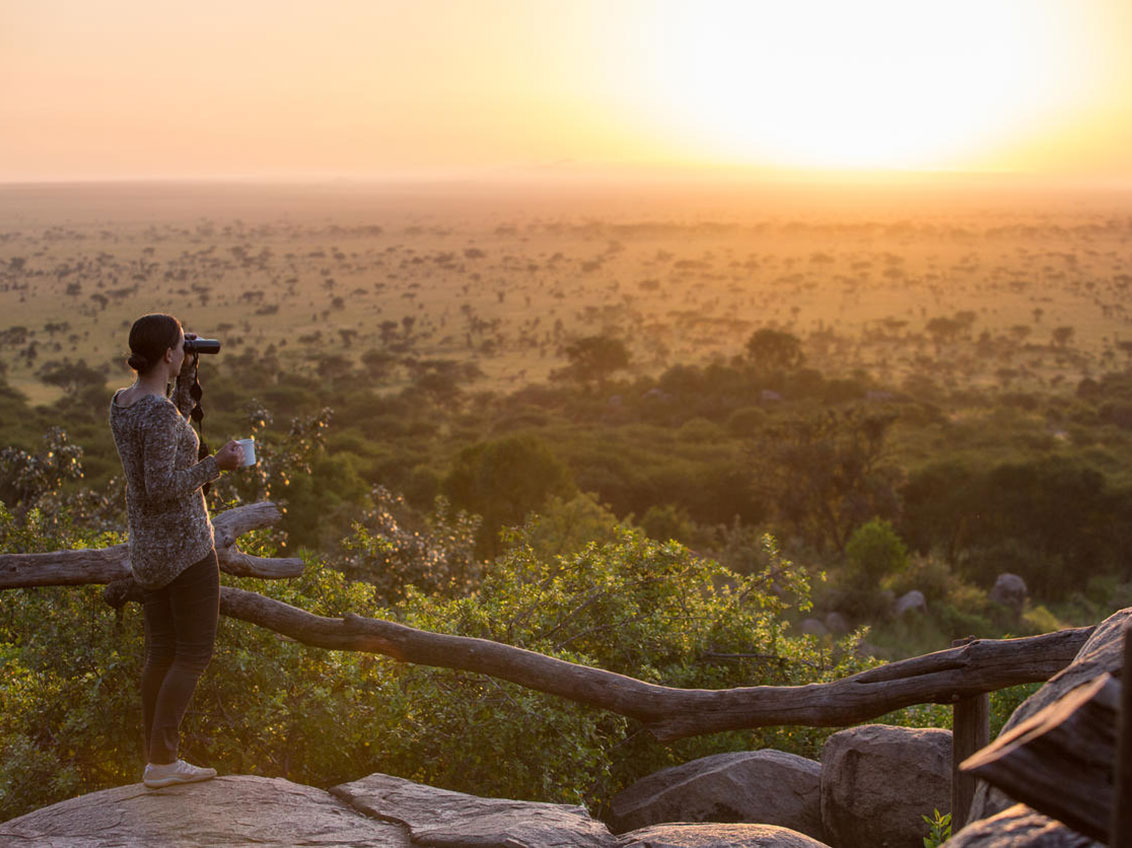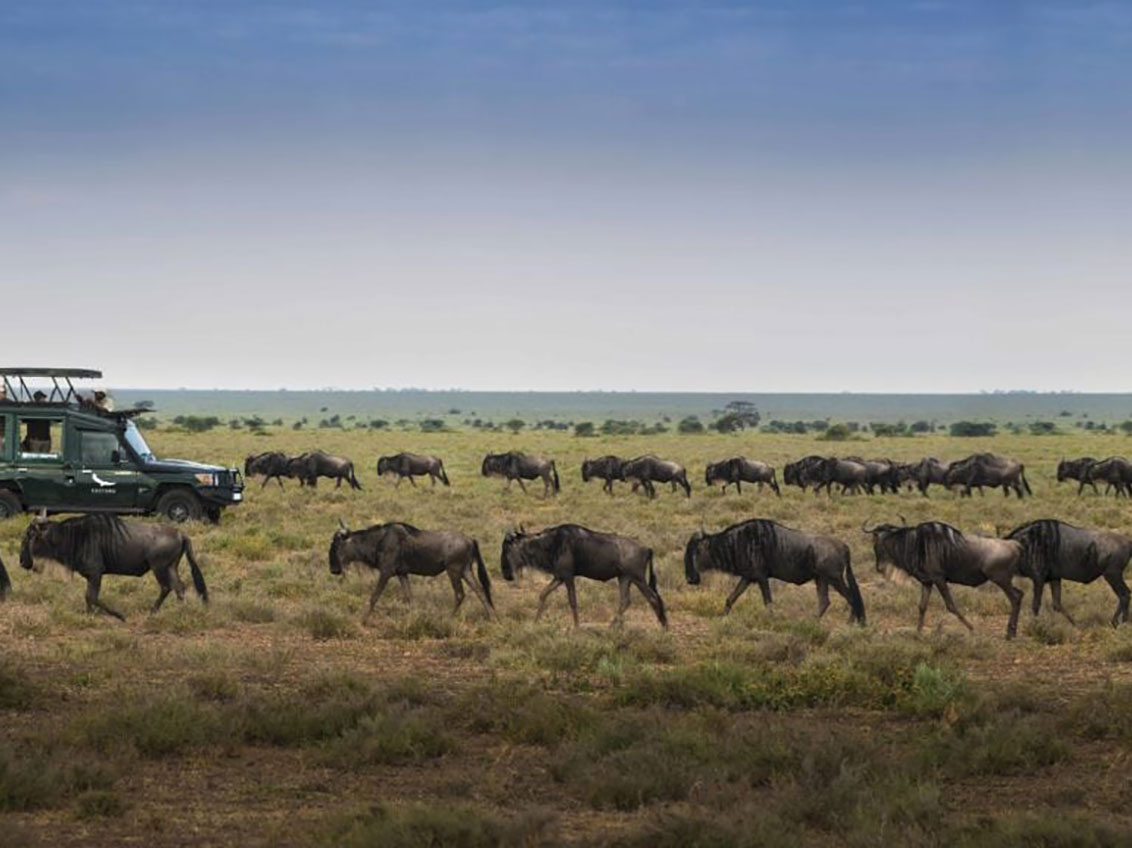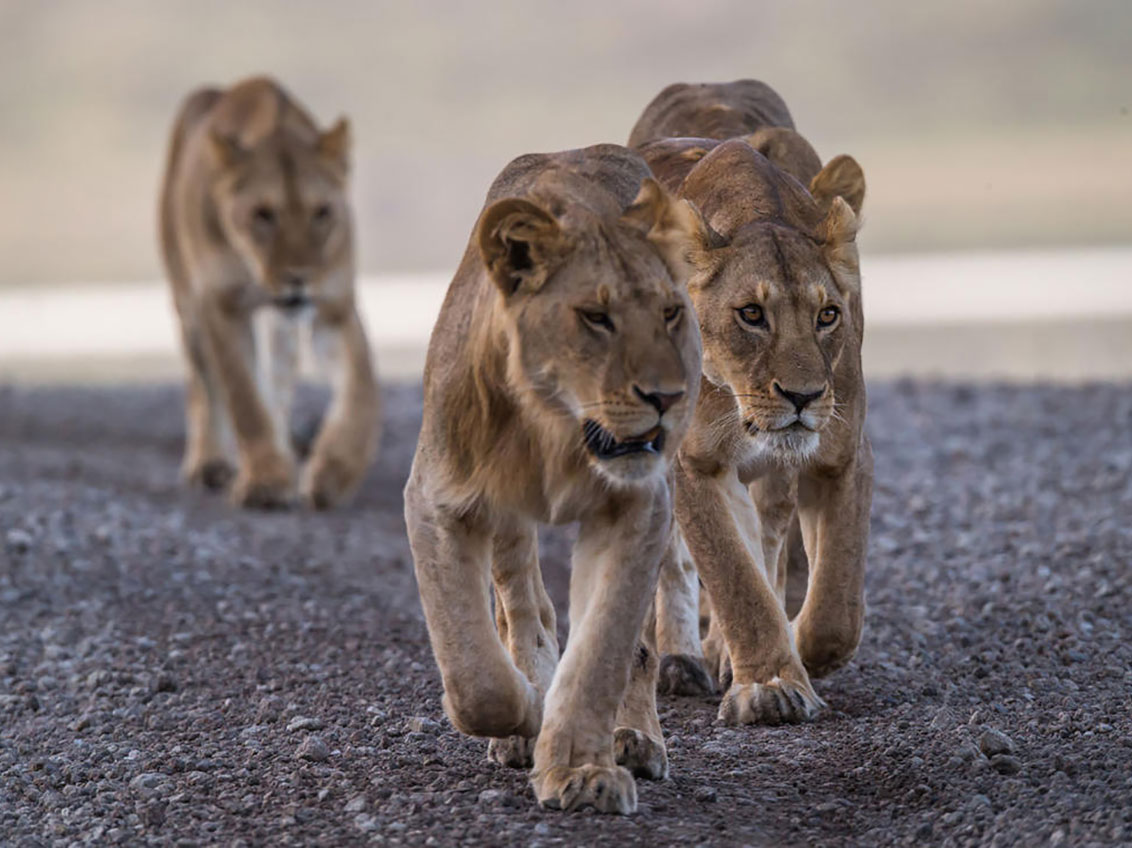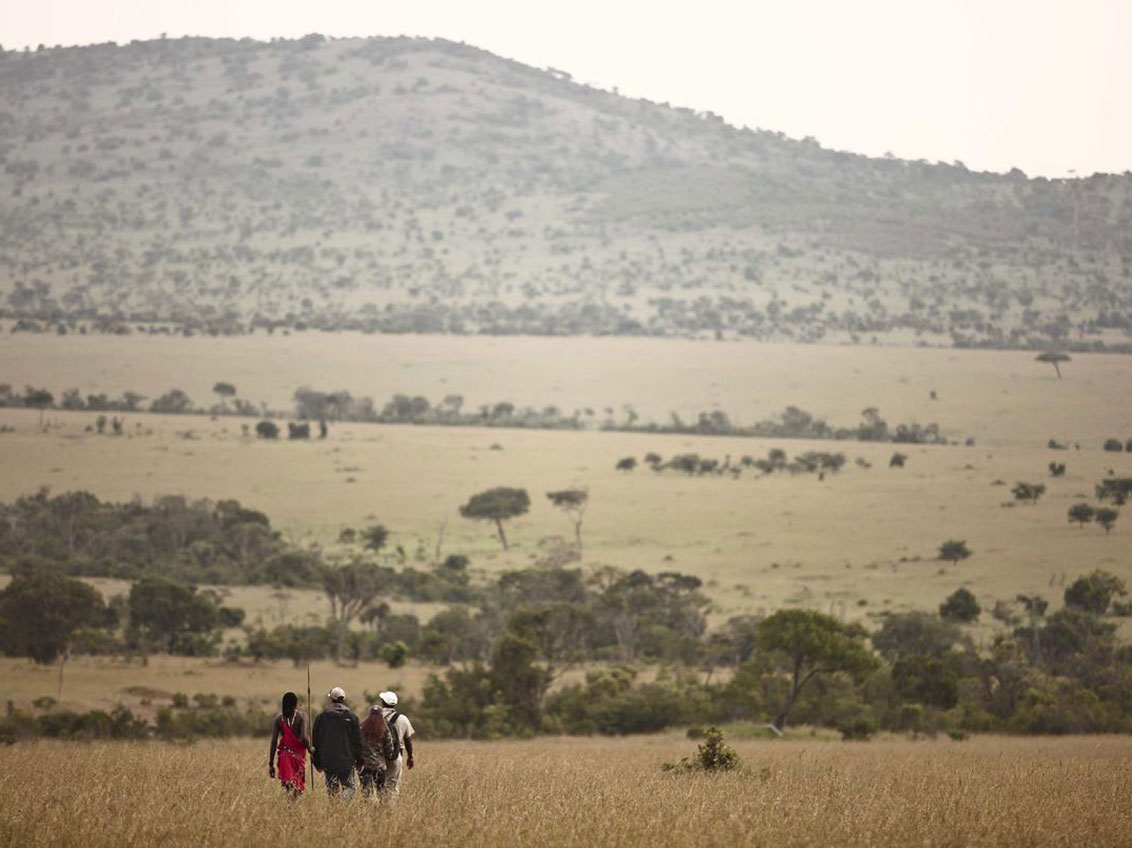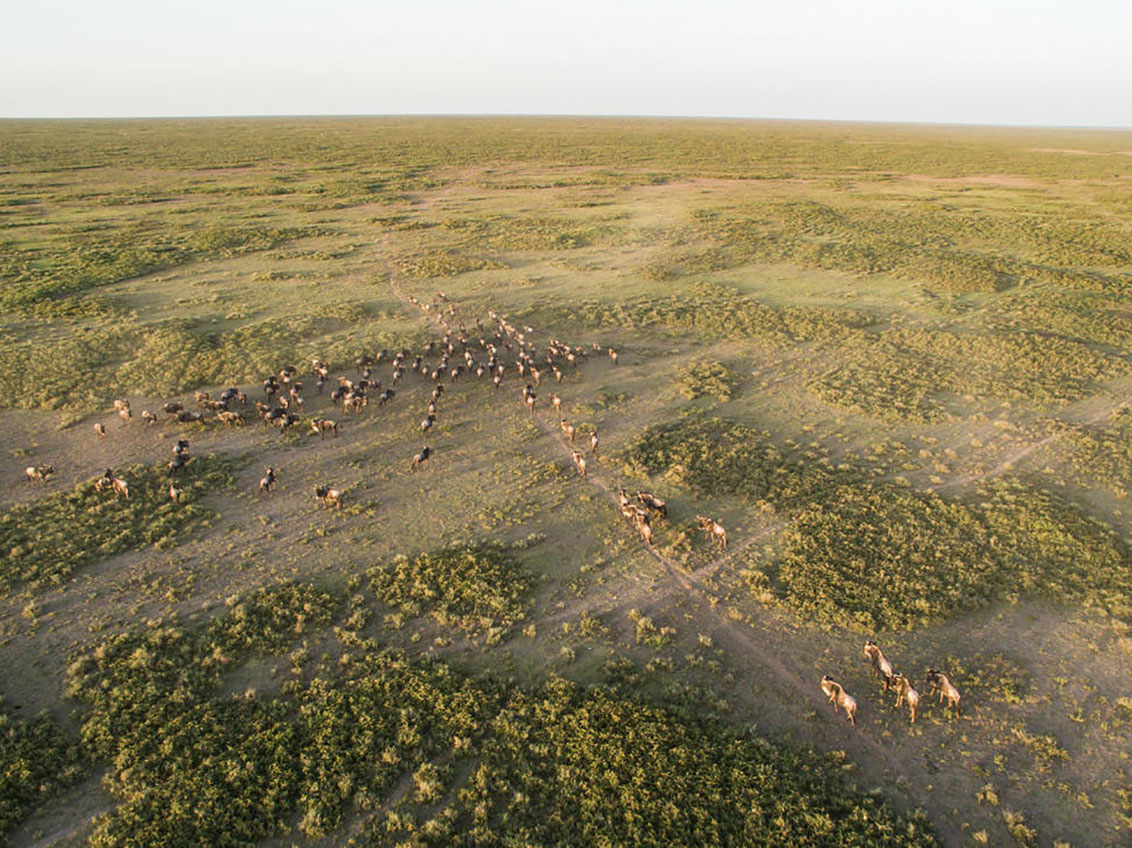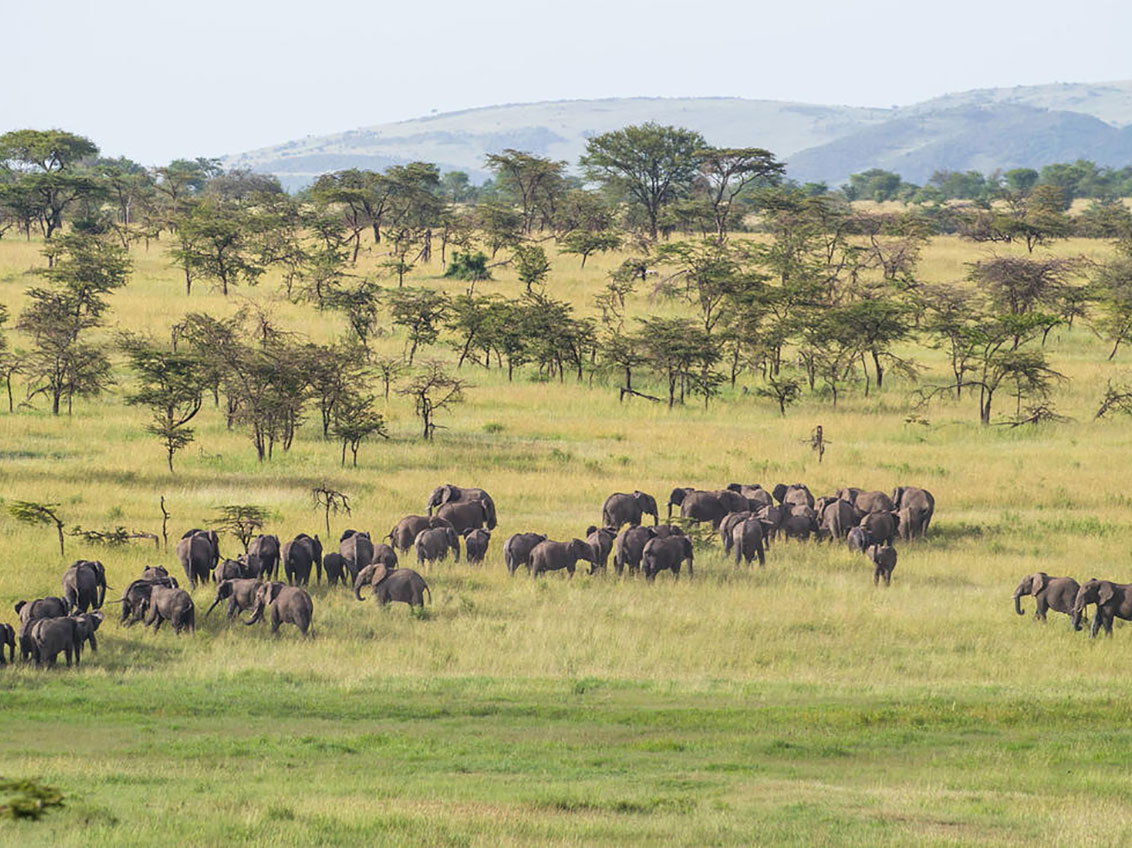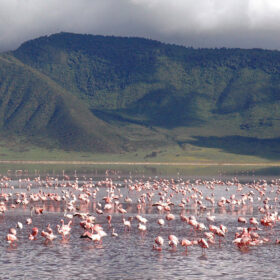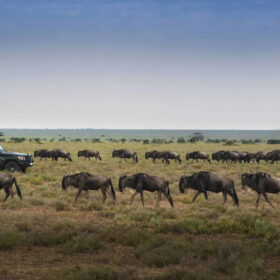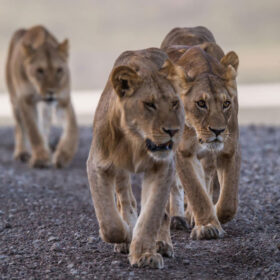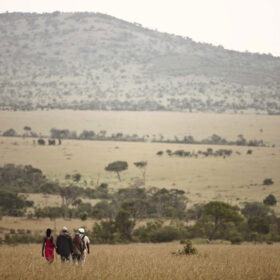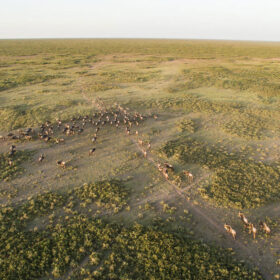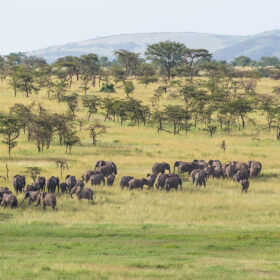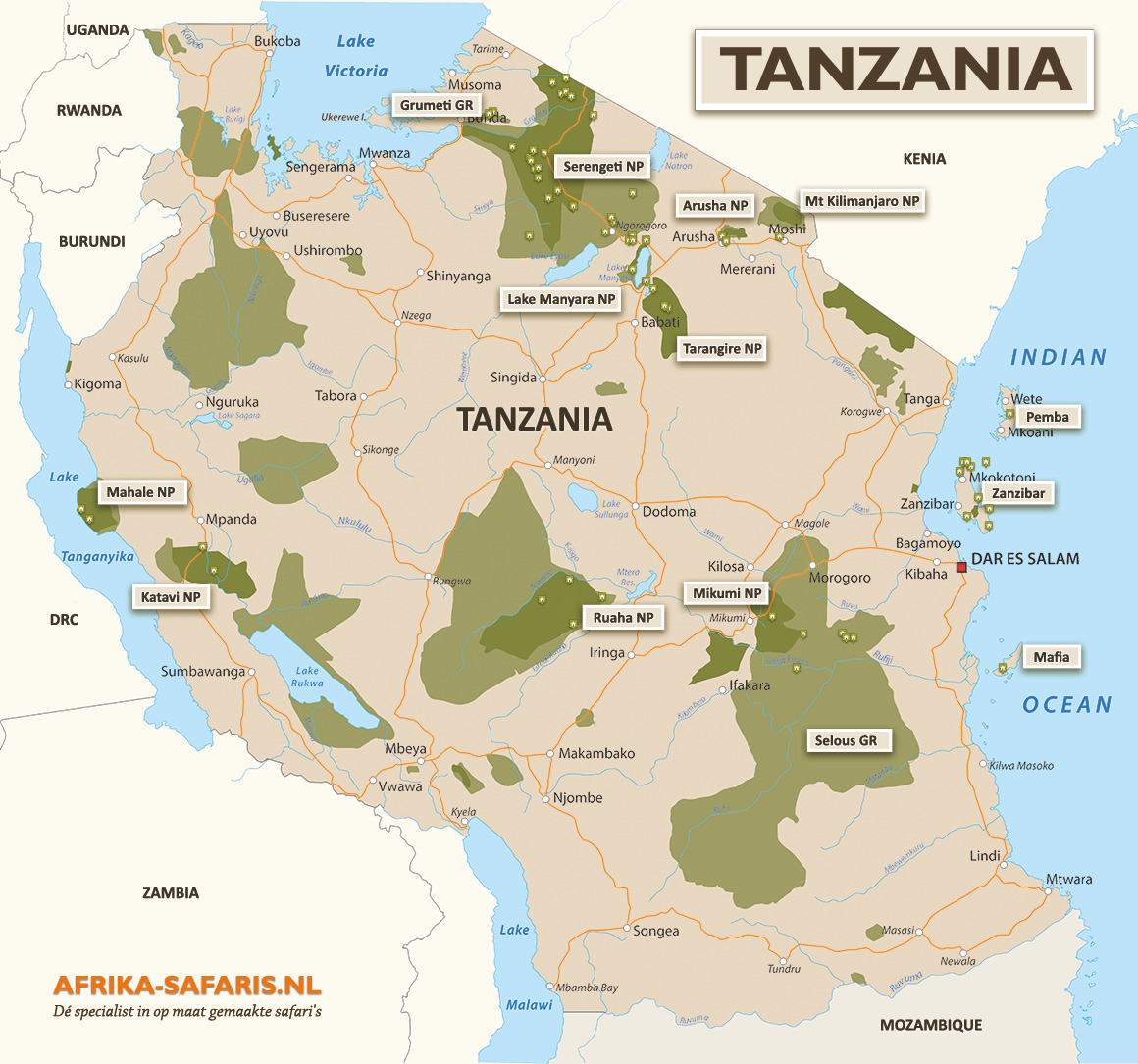On safari in Tanzania
The name Tanzania conjures up images of wildebeest and zebra running across the vast savannah. But Tanzania is so much more. Visit Tanzania to visit its diversity of parks, a relaxing seaside beach getaway on the island of Zanzibar or for a hiking expedition to the summit of Mount Kilimanjaro. Whatever choice you make, the friendly locals will be happy to welcome you. With all this diversity, it’s hard to pick where to go. We are happy to help you choose.
Nature reserves in Tanzania
Serengeti National Park
Serengeti National Park is one of the most famous and impressive parks in Africa. The name Serengeti comes from the Maasai word Siringiti, translated it means “vast plain. As soon as one descends into the Serengeti, it is clear that this is a well-chosen name. A vast landscape with the only interruptions being animals, trees and the “kopjes”(rock formations). The plains of the Serengeti are home to an enormous amount of wildlife. A famous phenomenon in the Serengeti is the so-called ‘great migration’: a cycle in which an infinite number of animals move through the park in search of good grazing areas and water. The animals (mainly wildebeest and zebra) are so numerous that the plains are literally black with animals. However, Serengeti National Park has much more to offer than just the great migration: very numerous lion populations, elephants, giraffes, zebras, large herds of buffalo, several antelopes , such as the topi, hartebeest, thomson’s and grant’s gazelle and dikdik. With some luck, you may also see leopard, rhino and hippo. Furthermore, the vast plains are ideally suited as hunting grounds for the fastest mammal on earth: the cheetah.
Accommodations and activities
There are several good mid-range accommodations in the Serengeti, such as Serengeti Kati Kati Lodge. There are also some luxury lodges: Serengeti Pioneer Camp and Serengeti Migration Camp. In planning, we obviously try to take into account “the great migration” as much as possible, but it is good to realize that these kinds of natural phenomena depend on a number of factors and therefore can never be predicted with certainty.
In terms of activities, it will not surprise you, game drives are the main part. The park lends itself perfectly to exploration through longer treks, with a picnic lunch along the way at a beautiful location in the bush.
Extra special: ballon ride over the Serengeti
A wonderful way to experience the Serengeti from a completely different perspective is by hot air balloon flight. The day starts early; around 5 a.m. you will be picked up and taken to the launch site. There is the meeting with the pilot and the briefing, while the balloon is being inflated. Just before the sun rises, the balloon takes off, for a 1-hour flight. After landing, an English champagne breakfast is served in the bush in ‘Out of Africa style’, complete with Chinese tableware and linen tablecloths. Of course, all participants (maximum 16 people per flight) will receive a flight certificate afterwards.
Ngorongoro Conservation Area
A large part of northern Tanzania was formed by the Great Rift, and one of the most prominent results is the Ngorongoro Crater, the world’s largest intact caldera. Over the centuries, the landscape has become a fertile paradise, and within the Ngorongoro Crater the variety of both landscapes and wildlife is unprecedented. The floor of the crater is home to all members of the “Big Five” (elephant, lion, (black) rhino, leopard and buffalo), among others. In Lake Magadi, the alkaline lake inside the crater, flamingos are found while in the freshwater pools and streams hippos seek refreshment after their nightly grazing excursion. In the Lerai forest, elephants with giant tusks eat from the trees, across the plains, wildebeest, zebra and gazelle graze. Lions and many hyenas ensure that the animals must always be on guard, and all this takes place in a relatively small area, the crater itself having a diameter of just under 15 kilometers. All in all, the wildlife and imposing landscape in the crater is an overwhelming experience! It goes without saying that many people want to see this wondrous spectacle, so it is worth noting that it is busier than many other areas.
Accommodations around Ngorongoro
There are several accommodations near the crater, such as Ngorongoro Farm House, Rhotia Valley Lodge. Even more special is to stay in one of the lodges òn the crater rim, where the magnificent view over the low-lying crater floor naturally captures the imagination. A mid-range accommodation is Ngorogoro Sopa Lodge, and in the most luxurious segment, Ngorongoro Crater Lodge provides pure indulgence and luxury.
Zanzibar
Perfect for ending your safari at leisure is Zanzibar. An island on the east coast of Tanzania measuring 1554 km2. Zanzibar is known for its diving spots in and around the coral reefs on the north and east coasts. of Zanzibar. Along with Pemba and Mafia, Zanzibar is known for its spices. Cloves, nutmeg, cinnamon and pepper are especially prevalent on the island. A ‘Spice tour’ is definitely worthwhile as well.
Lake Manyara National Park
The saline lake Lake Manyara attracts lots of large water birds such as pelicans, storks and flamingos (thousands). More than 400 species of birds can be spotted in this park. According to Ernest Hemingway, “the most beautiful lake he ever saw in Africa. We can hardly prove him wrong. Wonderful nature combined with a great diversity of animal species. That’s Lake Manyara in a nutshell. The whistling birds and playing monkeys welcome you to this beautiful National Park. In the “woodland” landscape, there is a good chance of meeting elephants. As the forest thins out, it changes to grasslands. You will see giraffe, zebra, wildebeest and buffalo at very close range. The Manyara Hippo pool is also worth seeing.
Tarangire National Park
Perhaps a slightly lesser known park, but completely unjustified! With its 550 different bird species, it is ideal for bird lovers. In fact, nowhere else in East Africa are so many different bird species found in one area. Tarangire’s landscape is diverse; from Baobab-strewn plains to evergreen swamps. The lifeblood of the park is the Tarangire River. Even in the dry season, it still provides an opportunity for animals to drink. Elephants dig holes in the riverbed in search of underground streams. This also benefits the other animals. In addition to the large herds of elephants, the park is also known for its large herds of buffalo, when they all get moving you can literally feel the ground tremble. You will also encounter many other grazers such as impalas, gazelles, zebras and wildebeest in the park. The small brightly colored love birds stand in stark contrast to the large black southern ground hornbills. The small klip badgers contrast with the large elephants, even though they are distant relatives.



